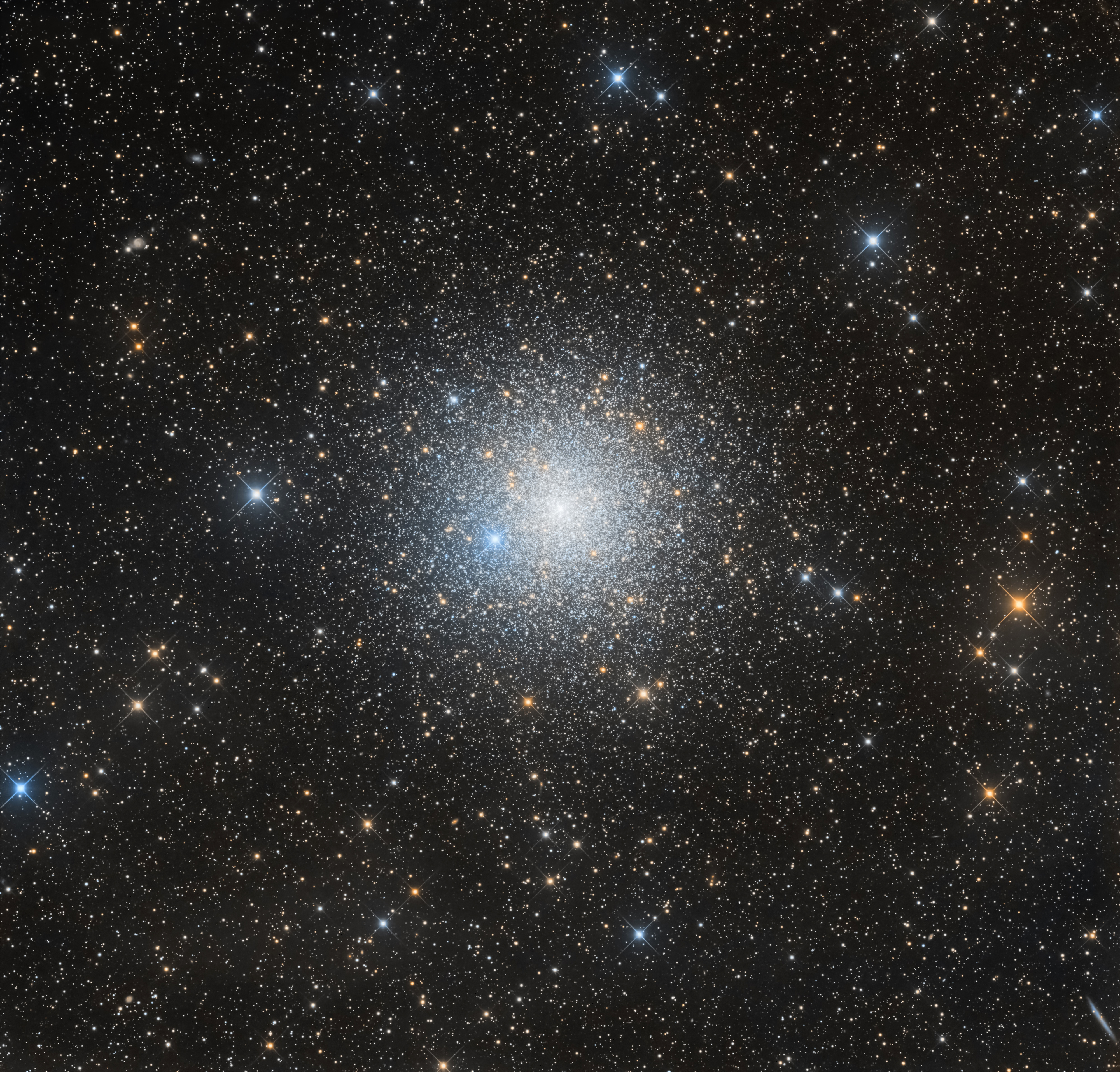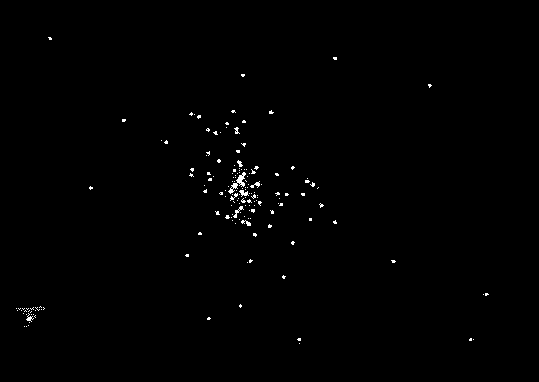
Posted on 10/25/2024 1:19:24 PM PDT by MtnClimber
Explanation: Some 13,000 light-years away toward the southern constellation Pavo, the globular star cluster NGC 6752 roams the halo of our Milky Way galaxy. Over 10 billion years old, NGC 6752 follows clusters Omega Centauri, 47 Tucanae, and Messier 22 as the fourth brightest globular in planet Earth's night sky. It holds over 100 thousand stars in a sphere about 100 light-years in diameter. Telescopic explorations of NGC 6752 have found that a remarkable fraction of the stars near the cluster's core are multiple star systems. They also reveal the presence of blue straggle stars, stars which appear to be too young and massive to exist in a cluster whose stars are all expected to be at least twice as old as the Sun. The blue stragglers are thought to be formed by star mergers and collisions in the dense stellar environment at the cluster's core. This sharp color composite also features the cluster's ancient red giant stars in yellowish hues. (Note: The bright, spiky blue star about 8 o'clock from the cluster center is a foreground star along the line-of-sight to NGC 6752)
For more detail go to the link and click on the image for a high definition image. You can then move the magnifying glass cursor then click to zoom in and click again to zoom out. When zoomed in you can scan by moving the side bars on the bottom and right side of the image.

🪐 🌟 🌌 🍔
Wow.
Assuming a star in such a cluster could have planets, would they be so irradiated as to prevent life?
How globular can you get?
I think the star the planet orbited would dominate the cosmic irradiation, but I don’t know for sure. A good question.
I bet Dolly Parton would know . . . Heh.
There’s a lot of there out there.
Globulists leave their gloubular star cluster because it’s too crowded.
And they come here bringing their globulist ideas and try to take over our planet.
Globulists leave their gloubular star cluster because it’s too crowded.
And they come here bringing their globulist ideas and try to take over our planet.
The greatest danger would be orbital instabilities caused by stars being so tightly packed together. Near the core stars are even colliding and merging when normally that is extremely rare in our region of the galaxy. A star system on the outer reaches of a globular cluster might be safe for a while, but even the orbits of stars around them tend to be erratic and very elliptical, sporadically carrying them in and out of the central regions. I doubt life on any of them could survive for very long.
Good one, lol…
Any photos we take of this cluster, and ANY globular cluster, are just basically “snapshots”. Any computer animation of the cluster stellar members I imagine, might look like a cosmic ball of bees swarming about.

Here’s a game I play. It’s fun, I know it’s rather simple, but it is fascinating to watch the results of where a planetary body is placed.
https://www.stefanom.org/spc/
Disclaimer: Opinions posted on Free Republic are those of the individual posters and do not necessarily represent the opinion of Free Republic or its management. All materials posted herein are protected by copyright law and the exemption for fair use of copyrighted works.